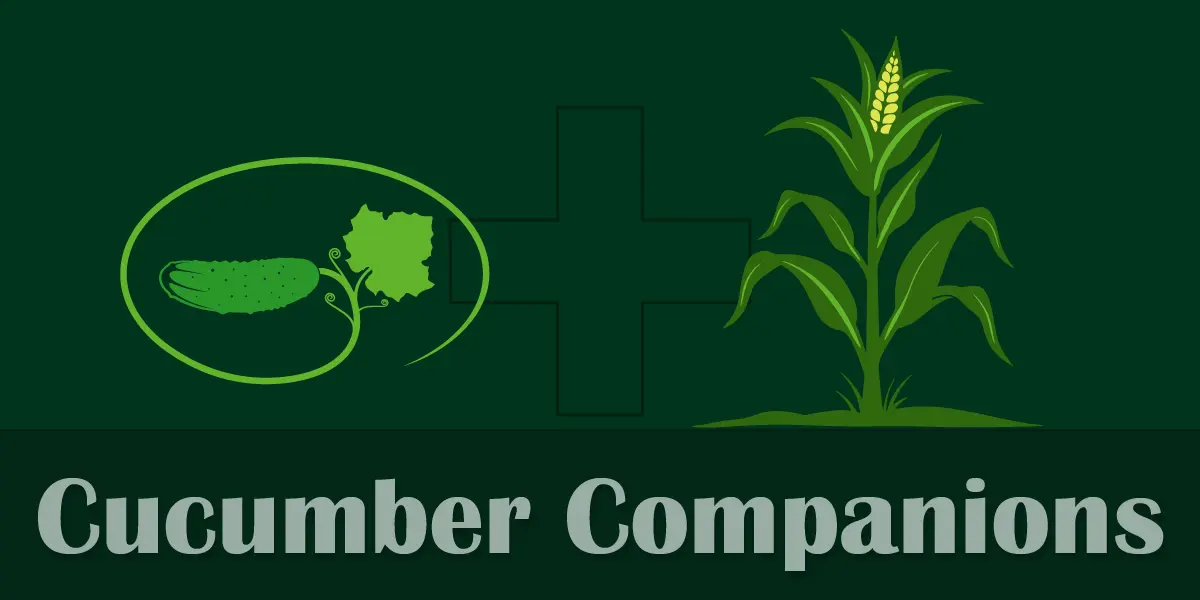If a cucumber plant posted a want ad, it might read like this:
Wanted: Constant companion for daily support. Must be able to fix nitrogen and discourage pests. Also must be willing to work for free.
Such are the demands for a companion plant for cucumbers.
Companion planting is the practice of growing different and specific plant species together for mutual benefit. This symbiotic partnership boosts growth, protects crops from pests, attracts pollinators, and improves the soil’s nutrient profile.
What works for cucumbers may not work for tomatoes, sweet potatoes, and so on. The trick is choosing the right companion plants so the relationship thrives. It’s like matchmaking for plants!
Benefits of Companion Planting
- Some plants repel pests naturally, while others attract beneficial insects that feed on garden pests.
- Legumes like beans enrich the soil with nitrogen, benefiting nutrient-hungry crops like cucumbers.
- Companion planting takes full advantage of space in a garden.
- Cucumbers grown alongside their ideal companions often produce bigger crops.
Behind every great cucumber lies a companion plant.
12 Companion Plants for Cucumbers
1. Beans
- Beans are nitrogen-fixers that enrich the soil with this vital nutrient.
- Pole beans save vertical space and benefit cucumbers by creating a living trellis.
- Bush beans attract predatory insects that feed on pests.
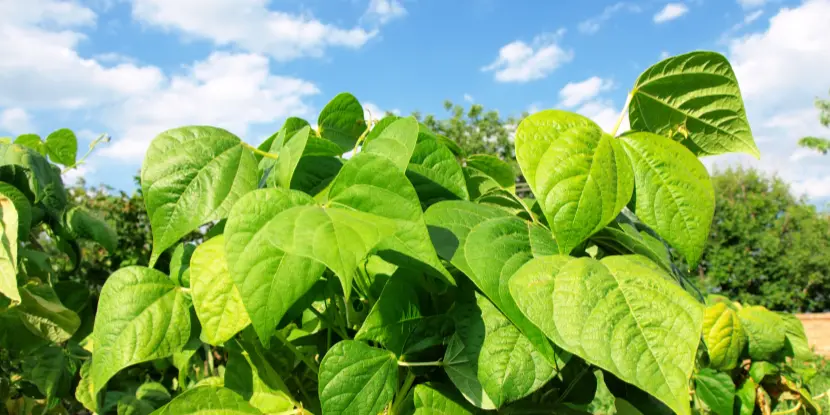
Bean plants fix nitrogen in the soil and also provide excellent ground cover.
2. Radishes
- Radishes repel cucumber beetles with their strong scent, which also attracts pollinators.
- They act as a trap crop, drawing pests like flea beetles away from cucumbers.
- They grow fast without competing for space or nutrients.
- They loosen the soil as they grow, improving aeration and drainage in the cucumber bed.
3. Corn
- Corn provides shade for cucumbers during the heat of summer.
- Its sturdy stalks are natural trellises for cucumber vines, saving space and supporting vertical growth.
- It attracts pollinators.
- Paired with legumes like beans, corn helps create a healthy three-way companion system, benefitting all plants.
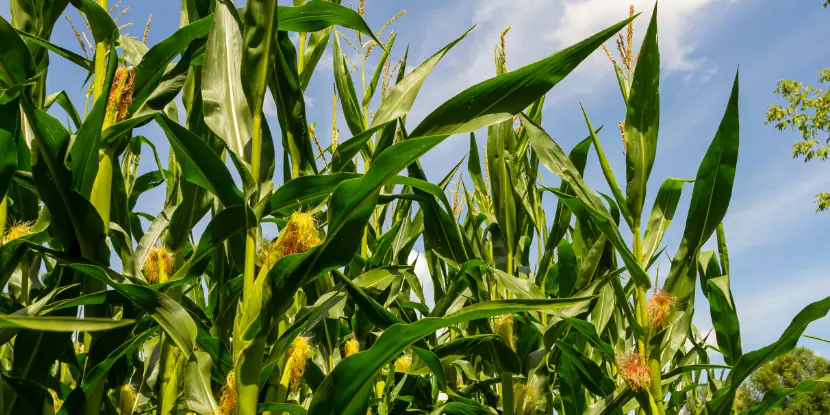
Corn provides a natural trellis for cucumber plants.
4. Dill
- Dill attracts beneficial insects like ladybugs and lacewings, which prey on aphids, spider mites, and other cucumber pests.
- Its aromatic properties repel pests like squash bugs and cucumber beetles.
- It lures bees and other pollinators to the garden.
- It doesn’t compete heavily for nutrients or space, making it an ideal companion.
5. Nasturtiums
- Nasturtiums are a trap crop that draws aphids, whiteflies, and other pests away from cucumbers.
- Their peppery scent deters cucumber beetles and other harmful insects.
- They attract pollinators like bees, which can improve cucumber fruit production.
- Their ground cover suppresses weed growth and helps retain soil moisture.
- They beautify the garden with their vibrant flowers.
6. Sunflowers
- Sunflowers are sturdy natural trellises for climbing cucumber vines.
- Their bright blooms attract pollinators like bees.
- They draw aphids away from cucumbers.
- They create partial shade in the garden, which can reduce heat stress.
- Their deep roots break up compacted soil to boost water absorption.
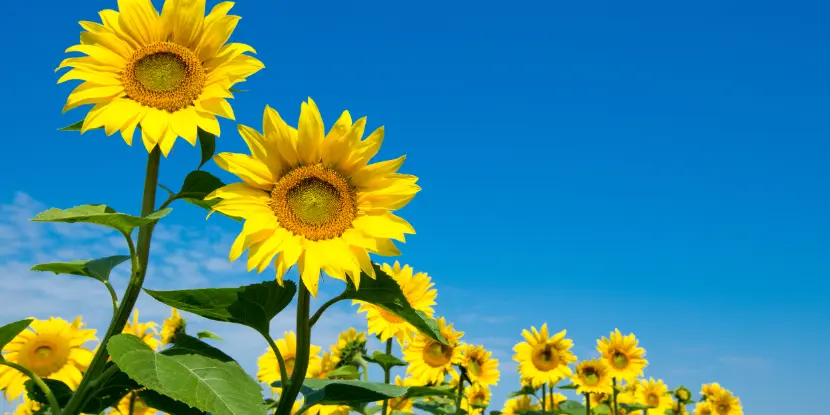
Sunflowers attract pollinators and serve as support for climbing cucumber vines.
7. Marigolds
- Marigolds’ pungent scent deters harmful pests like nematodes, aphids, and whiteflies.
- They attract beneficial insects like ladybugs and parasitic wasps, which help control pest populations.
- Their roots secrete natural compounds that suppress harmful soil-borne pathogens.
- They improve soil health with organic matter as they decompose.
- They add brilliant color to the garden.
8. Carrots
- Carrots aerate the soil with deep roots, creating a better environment for cucumber roots.
- They don’t compete heavily for nutrients, as their growth habits differ from cucumbers.
- Their foliage provides ground cover.
- They attract beneficial insects like predatory wasps and ladybugs.
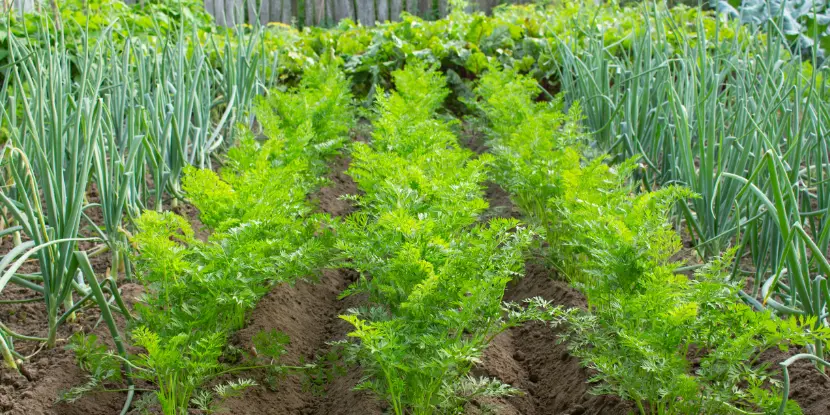
Carrots and onion plants are two of the best companions for cucumbers.
9. Onions
- Onions repel cucumber pests like aphids, cabbage loopers, and cucumber beetles.
- Their shallow roots don’t compete with cucumber roots for nutrients or space.
- They deter fungal diseases by promoting a healthier, pest-free growing environment.
- They improve soil health when their organic matter decomposes after harvest.
- They can grow near cucumbers without crowding them.
10. Spinach
- Spinach acts as a quick-growing ground cover, helping to suppress weeds and retain soil moisture.
- Its shallow root system doesn’t compete with cucumber roots.
- It improves soil health as it decomposes after harvest.
- It can help maintain a diverse garden ecosystem, promoting overall plant health.
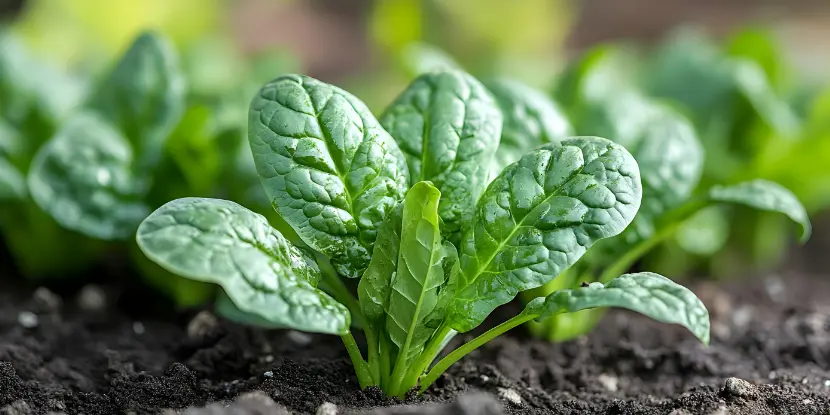
Spinach is a fast-growing plant offering good ground cover.,
11. Peppermint
- Peppermint’s strong aroma repels common cucumber pests such as aphids, whiteflies, and cucumber beetles.
- It attracts beneficial insects like predatory wasps and hoverflies.
- It promotes positive microbial activity when its leaves decompose.
- Its spreading habit provides ground cover, suppresses weeds, and retains soil moisture.
- It can deter rodents and other small mammals that may damage cucumber plants.
12. Borage
- Borage attracts pollinators like bees and butterflies.
- It’s a trap crop for pests like hornworms, drawing them away from cucumbers.
- Its strong scent repels harmful insects like cabbage worms and tomato hornworms.
- Its deep roots help break up compacted soil and improve water absorption.
- Its edible leaves and flowers add diversity to the garden and can be used as a culinary herb.
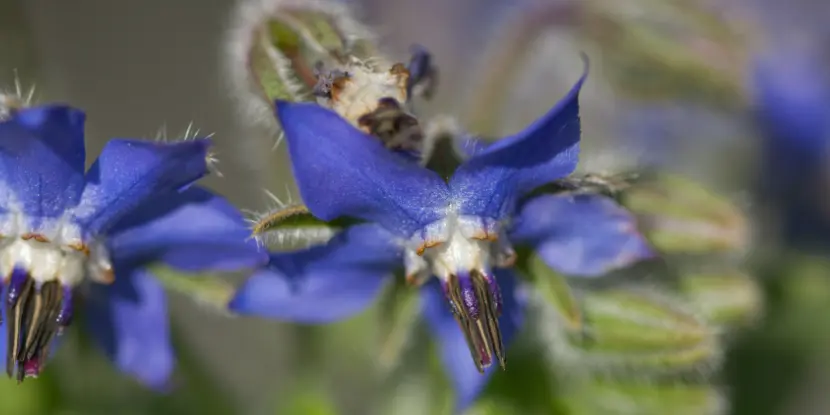
Borage attracts pollinators like bees and butterflies and repels harmful insects like cabbage worms and tomato hornworms.
Complementary Practices to Boost Yield
Step one is pairing cucumbers with their perfect companions. For even better results, consider these complementary gardening practices.
1. Mulching
Mulching retains moisture, regulates soil temperature, and prevents weed growth. Organic mulches like straw or shredded leaves work best for cucumbers.
2. Composting
Add compost to your soil to enrich and prepare it for optimal cucumber growth. Composting also reduces your kitchen waste.
3. Natural Pest Control
Encourage beneficial insects like ladybugs and lacewings in your garden. They naturally control pests that could harm your cucumbers.
4. Crop Rotation
Rotate your crops each season to prevent nutrient depletion in the soil and disease build-up.
FAQs: Companion Plants for Cucumbers
Q: Can I plant cucumbers with tomatoes?
Yes, but keep them well-spaced to reduce competition for water and nutrients.
Q: Can I companion plant cucumbers in containers?
Yes! Pair them with radishes, dill, or marigolds in container gardens for similar benefits.
Q: Are cucumbers compatible with beans?
Cucumbers and beans grow well together. Beans enrich the soil with nitrogen, a crucial nutrient for cucumber plants.
Q: Can I plant cucumbers near potatoes?
Avoid planting cucumbers near potatoes. Both plants are heavy feeders and can compete for nutrients, while potatoes may also attract pests harmful to cucumbers.
Q: How close should companion plants be to cucumbers?
Companion plants should usually be placed within a few feet of cucumbers to deter pests, attract pollinators, or provide other benefits like shade or soil improvement.
Q: Can I grow cucumbers with herbs?
Many herbs, such as dill, basil, and oregano, make excellent companions for cucumbers. They repel pests and attract beneficial insects.
Q: Are there any flowers I should avoid planting with cucumbers?
Avoid planting flowers like fennel near cucumbers. They can inhibit growth and compete for nutrients, negatively impacting cucumber plants.
Q: Can cucumbers and peppers be planted as companions?
Yes, cucumbers and peppers can grow near each other. They don’t compete for the same nutrients and can mutually benefit from shared pest deterrents like marigolds.

